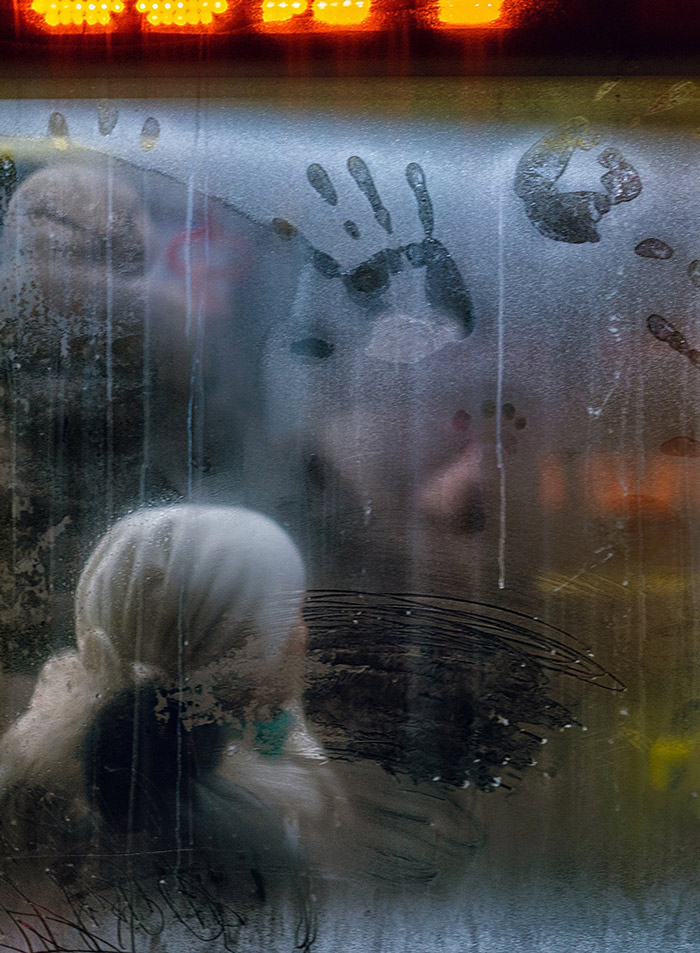Opinion
The London tube as a space for hate
By Tommy Hodgson
Published Sep 5, 2019 at 10:42 AM
Reading time: 3 minutes
Human rights
Sep 5, 2019
The reaction to this video of a man righteously shouting down a racist on the tube has been one of pure joy of ‘almost erotic’ proportions. The short clip went viral, and for good reason. Not only did the bafflement of the intervening man expose the absurdity of the accused’s position, it also disarmed the verbal attacker of his power of ridicule and bigotry. By taking a forceful, factual, and no-nonsense stand, the hero of the video physically and mentally touted a righteous anger to give someone his due comeuppance. Though the phenomenon of a viral ‘instant justice’ video is not unique to London, it made me reflect on the role of the city and the tube itself in such confrontations.
In the video, the dull decor of the underground provides a familiar setting—its yellow and blue poles, curved doors and capsule-like enclosing. The tube exists in a vacuum. It is not lawless—there are obvious rules and unspoken ones—but it does not appear to come under the jurisdiction of London in natural daylight. The tube’s atmosphere gives it a distinctive industrialised feel, one with jagged escalator steps and huge warning signs. It is flashes of colour before the grey sets in; it is movement, a sea of buds in ears, and eyes glazed from routine.
Drunken jeers and mob reverb usually lurk under the shadows in these underground spaces, passing as but a flash, but one drop of fear can rear sinister faces. Racist tirades in public spaces often appear out of an underlying ugliness, a reminder that London is not post-racial and multiethnic, but subject to the abuse of bigots, xenophobes, sexists, homophobes, transphobes, Islamophobes, anti-Semites, and a whole cast of grotesque creations who, yes, are London’s residents too. Such rants on public transport are a spectacle; a spontaneous reaction commodified for a worldwide audience through everyone’s ownership of a smartphone.
There is nothing brave about a bigot verbally unloading on a stranger on the tube. But, in a way, to that individual it must seem so cathartic, given their deeply-held beliefs about their own superiority, and thus the inferiority of others they are forced to travel alongside everyday. Yet, if we are talking a numbers game, it is surely never going to end well for them. If there were one thing to unite commuters to whom eye contact is an affront, save for an emergency, it would be the interruption we witnessed in the video.
As is often the case with outrageous human displays, the backlash tends to be more interesting than the original performance. The very real and tangible defence of victims of racism or prejudice, in the moment, deserves recognition as more righteous than the act itself, and the viral nature and celebration of the video proves it. The man defending the victim, and so vividly confronting the fanatic, channels all the counter-anger that many feel but do not necessarily express. It is a reaction to racists in high office, in the police or in other positions of power, where such a raw clash with injustice is not always possible or even thinkable. In that moment, the person standing up against racism represents another London, one that does not tolerate such bullying and does something about it.
The tube harbours this deep resentment from those with something to prove, which is prone to explode in the heat, artificial lights, and close proximity of fellow commuters. And the reaction to this, after the initial shock has worn off, produces a voice; an energy to counter the hate. In this most recent example, the succinct articulation against hostility, as well as the clear real-time impact of the words, gives the purest sense of retribution for us, the observer. Plenty of other examples have appeared in recent years, but also cases in which an outspoken public defence really could have changed the narrative for sufferers of harassment or violence.
This retribution is enough for some to counter the real visceral hate that exists in London, running parallel with the extreme, visible inequality of the city. The fact that injustice can be countered so successfully at the basest level is enough for some to provoke a sense of pride. While the response to the public spectacle should be applauded, it is not enough in order to counter a bigger, uglier wave of hate crimes and right-wing extremism that has been encouraged by huge swathes of the media, the ruling classes, and factions of the dark, untraceable internet.
One person standing up for another is not enough—one-off incidents have the tendency and momentum to increase and become more than just singular abominations. And in that sense, reactions to viral videos of racists being publicly told off serve their purpose. Like the tube, these reactions exist in a microcosm, and to break out of that shell, London must actually progress as a collective; it must confront the rotten core of such unadulterated hate, and not just as a backlash to injustice captured on camera.





